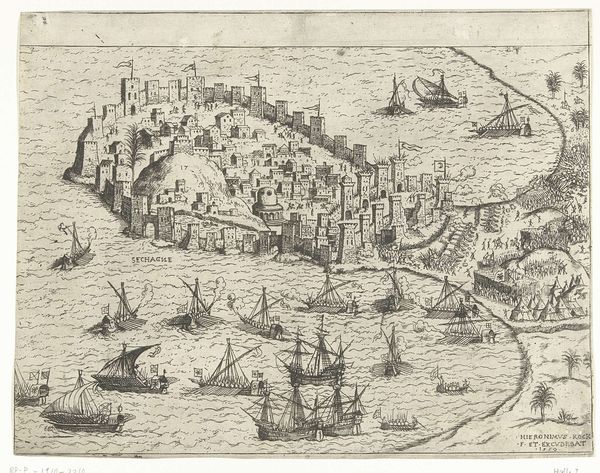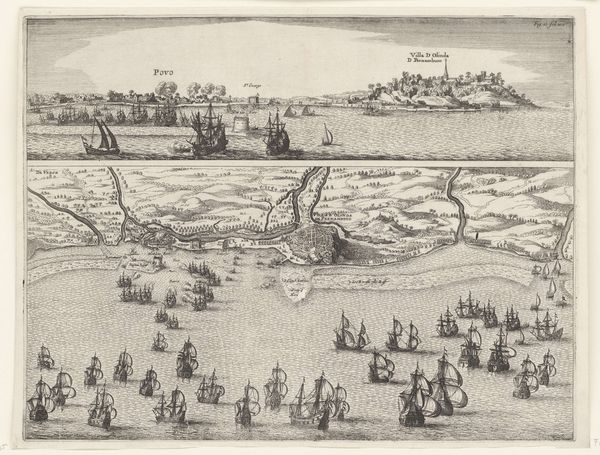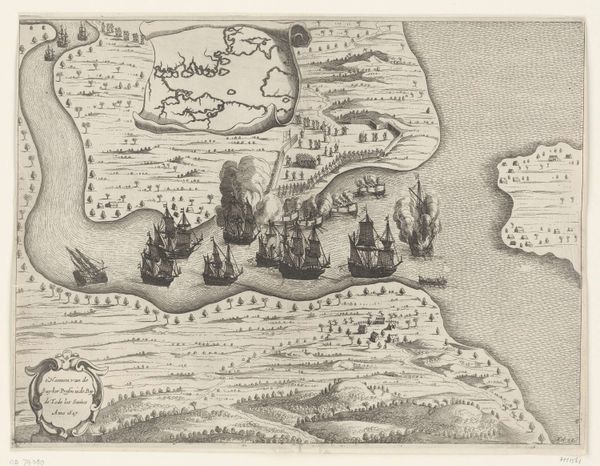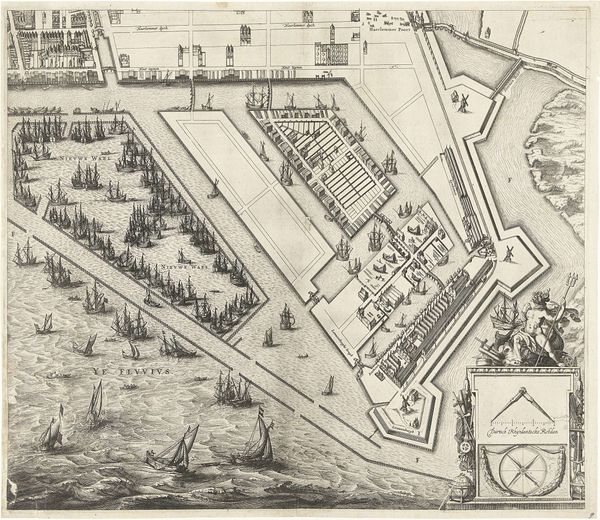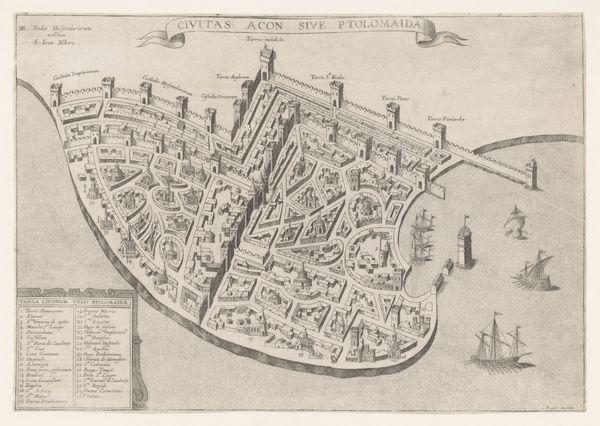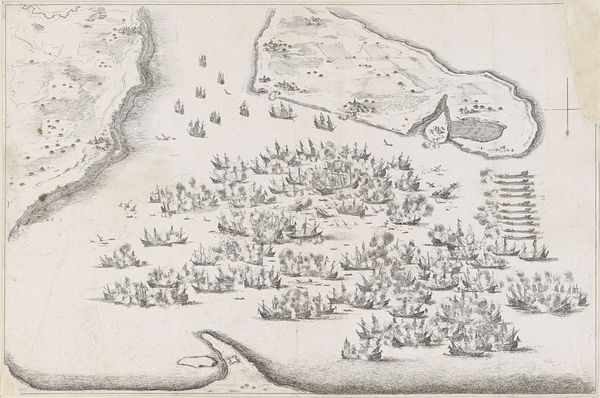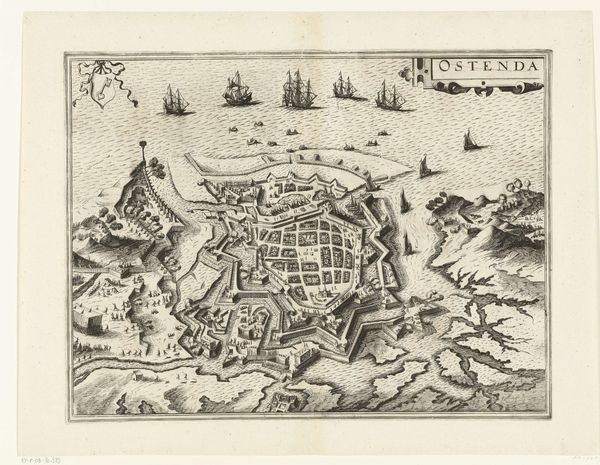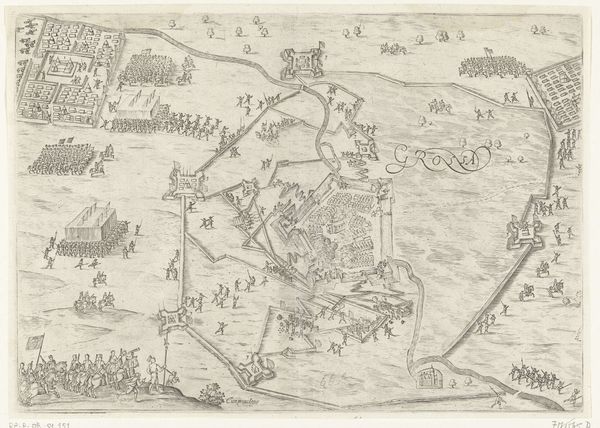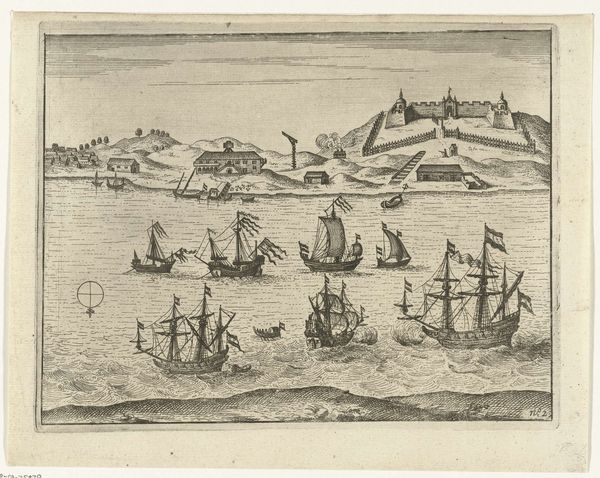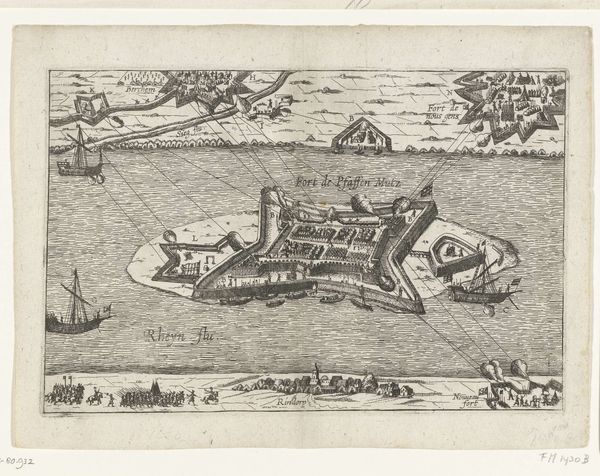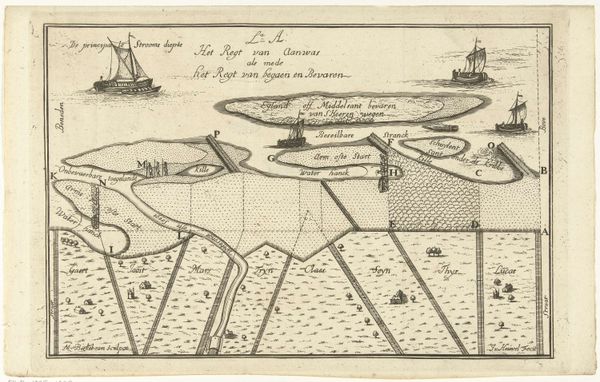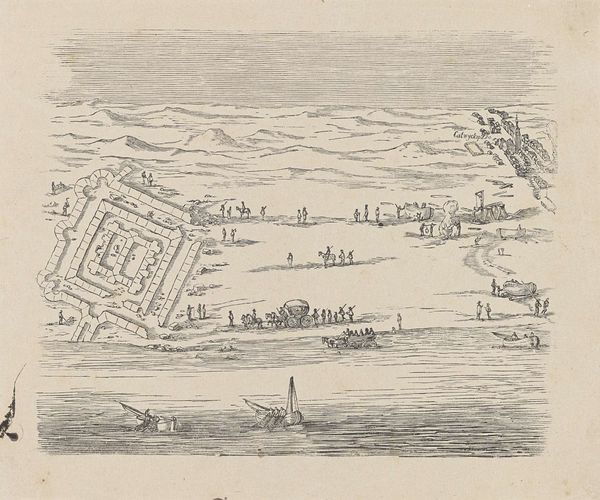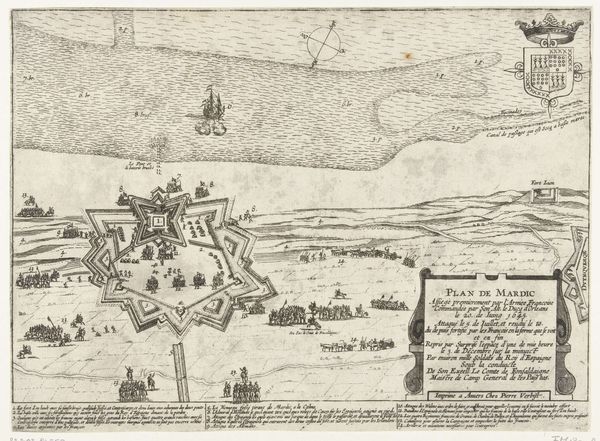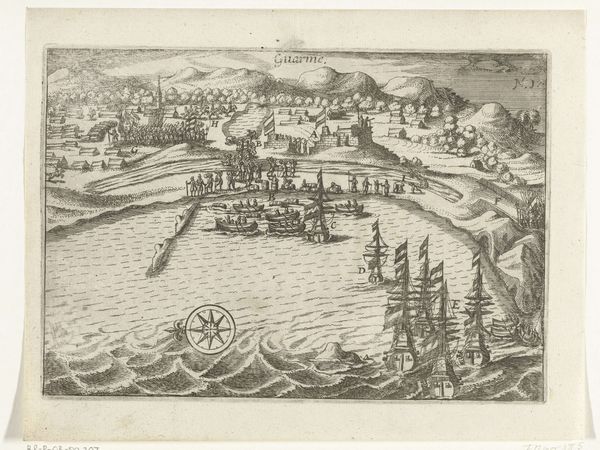
print, engraving
#
dutch-golden-age
# print
#
landscape
#
cityscape
#
history-painting
#
engraving
Dimensions: height 288 mm, width 375 mm
Copyright: Rijks Museum: Open Domain
Editor: Here we have an engraving from 1651-1652, titled "Belegering en ontzet van het fort Philippines, 1635" by an anonymous artist. The sheer level of detail in this print is fascinating. What strikes me is the very rigid geometry of the fort contrasted with the chaotic movement of figures outside. How do you interpret this work? Curator: Formally, the rigorous depiction of space through line is captivating. Consider the composition itself. The fortification, sharply defined, anchors the upper center of the work. How does the strategic placement of the ships interact with that anchor? Editor: They mirror the angles of the fort but from a distance; it almost creates a second geometric layer. Curator: Precisely. Notice the treatment of the ground: a meticulous tapestry of tiny figures. The engraving technique itself invites questions. Look at the variation in line thickness, creating visual texture, mass, and depth. To what extent does this impact the composition as a whole? Editor: I hadn’t really noticed, but some areas seem darker because of the close lines. So it's not just about depiction but also creating volume and space. Curator: Indeed. The engraver employs line not only to illustrate form but also to structure the entire visual field, directing our eye across the expansive landscape, from the ordered fortress to the seemingly boundless activity surrounding it. What might that contrast tell us? Editor: Well, the fort is organized while it looks as if figures surrounding the fort are less organized. So form is meaning in itself. Thanks! Curator: A keen observation; considering structure illuminates so much, wouldn't you agree?
Comments
No comments
Be the first to comment and join the conversation on the ultimate creative platform.
